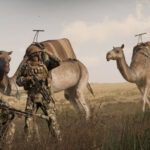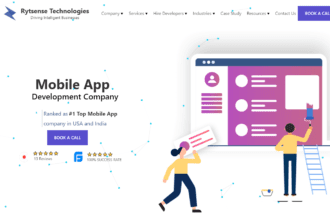
Earlier, framers employed traditional agricultural practices that were labor-intensive and time-consuming.. For example, physically counting the entire harvesting batch, evaluating the seedling progress, distinguishing between healthy and rotten fruits, etc.
However, to overcome these problems, they started leveraging artificial intelligence (AI) and machine learning (ML) to draw real-time insight regarding when to plant seeds, which crops to choose, which hybrid seeds to select for higher yields, and other things from simple day-to-day data. These included videos and images of fields, plantation methods, seedling processes, types of fertilizers, and other tasks. Additionally, AI/ML also helped farmers in the detection of pests, plant diseases, and undernutrition in farms.
However, for these AI/ML models to work efficiently, annotators need to collect farming data. And, by using the image annotation technique, train the AI/ML models. In this blog, we’ll briefly discuss image annotation, how it works, and what are its real-life applications in the agriculture sector. Moreover, learn how outsourcing image annotation service is your ultimate answer for image annotation challenges.
How Does Image Annotation Work?
Image annotation is the process of labeling the objects in the images and classifying them under a specific category. In context to the agriculture sector, these objects can be fruits and vegetables, equipment, and chemicals used in planting. These data are collected and labeled to train the AI/ML model to work efficiently. For instance, labeling ‘oranges’ for machines to identify oranges among ten different fruits.
Moreover, when we provide more detailed labeled data to AI/ML, it can efficiently identify things. We can feed them a labeled video of the entire orange fructification period and how it looks at each stage, frame by frame. Now, AL/ML has the power to identify whether an orange is rotten or ripe, its maturity level, and how much time it is going to take to ripen. This detailed identification happens only when AL/ML models are trained with thousands of agricultural data.
Application of Image Annotation in the Agriculture Sector
Here are some critical applications of image annotation in the agriculture sector.
Crops Detection & Health Monitoring
AI-enabled technologies can help the farmer identify the type of fruits and vegetables in a vast field. These activities are generally done via drone. AI/ML models are trained using various images of different types of fruits and vegetables. The training is done with both; healthy and rotten fruit and vegetable image. This helps the AI/ML model to identify and separate rotten fruits and vegetables from healthy ones. This also helps the farmers to identify pests and germs, enabling them to utilize pest control measures and other approaches to take the necessary action.
Check Plants Fructification
Apart from detecting the fruits, the ML model can determine the maturity of plants and their level of fructification. This helps to alert farmers about the stages of fructification and take decisions accordingly. For this, various video data of the fructification process are collected and labeled frame by frame. Each stage is marked and labeled for the ML model to understand the process.
Estimate the Yield
AI-enabled systems also help to estimate the yield. This is also a crucial step in farming as underestimating might result in crop waste and higher expenditures while overestimating could result in additional expenses that have an adverse effect on profitability. Knowing the estimated count helps the farmer in decision-making for distributing crucial logistics including transportation, labor, and other resources..
Monitoring Soil Health
Apart from monitoring crops, AI enables technologies to monitor the soil and find defects in it. To identify all existing bacteria and contents, a soil sample is obtained. Data from the sample is compared to a sizable database of soil data using a machine learning technique. The machine already has data on high-quality labeled soil. This helps to compare both and identify the problem in it. Generally, farmers use drones over fields to inspect the soil. After seeing the reports, they can make changes accordingly.
Automatic Weeding
Earlier, farmers had to employ labor-intensive techniques to get rid of weeds. However, the development of AI has given farmers access to an additional method called automated weeding. Robots and equipment are used in automatic weeding to clear the field of weeds. The use of laser lights is used to accomplish this. The entire field is surveyed by AI and robots. They have cameras on them. These cameras are also connected to software that can recognize weeds. This software is trained using image annotation techniques to identify the weed. Once recognized, the AI instructs its powerful lasers to use heat energy to destroy these weeds.
Live Stock Management
Animal husbandry, a part of farming, can also be controlled by AI-enabled technology. This tech can track animals in the field and give farmers crucial information. For instance, the animal count, animal conditioning, tracking their daily activity, and many more. Farmers use drones to capture the view of their animals and then use bounding boxes and polygon techniques of image annotation to train the AI/ML model. The trained AI/ML models monitor the animals and warn them if they see any uncalculated things happening in the field. Herein, when farmers are able to keep an eye on and monitor their livestock, it indirectly makes the animal husbandry business profitable.
Security Monitoring for Remote Farms
Another contemporary use of ML in smart farming is real-time security monitoring and surveillance for remote farms. Through image annotation and facial recognition, AI/ML models are trained with the list of personnel who can safely visit the farm. Once the models are trained, they can easily identify forced entry or spot anomalies in the field and warehouse. Additionally, systems are taught how a typical farm appears through numerous photographs and videos. If something goes wrong, this system can easily inform the farmer in real-time.
Weather Prediction
Farmers have found it challenging to predict the ideal time to plant seeds due to the changing environment. By analyzing historical weather patterns and phenomena, artificial intelligence can now recognize and emphasize even the most minute weather changes with the use of Image annotation. This helps the farmer to examine and plan their plantation process accordingly.
Image Annotation Challenges That the Agriculture Sector Faces
Before hundreds or thousands of photographs are submitted to a model, a data labeling team and machine learning professionals must precisely and accurately annotate each image. Images, especially in agriculture, are extremely complicated. Your model must sort through the unnecessary details included in each individual picture, such as leaves and branches. Therefore, the pictures in an agricultural computer vision model must be meticulously annotated by segmentation, which means that its form is delineated at the pixel level, in order to properly provide results.
To perform the entire procedure accurately, you need a professional data annotator. Because minor mistakes can cause a great amount of loss to the farmer. For example,say a pesticide is labeled as effective instead of dangerous. This mistake can spoil the entire harvested batch and cause loss to the farmer. Hence, the data annotator should have knowledge about the soil, plant species, and any other terms related to agriculture.
Apart from this, there is a chance that you lack resources. To annotate text accurately, you also need specific tools and software. You might have to buy one and learn how to use it. This might take time and a load of effort. As a busy businessman, it’s not necessary that you have the time to learn and perform all such activities.
How Outsourcing Image Annotation Service is the Solution?
Here are some important reasons why outsourcing image annotation services can help your business.
- Expert data annotators: Professional annotators have the skills necessary to correctly label and classify photos. These data annotators are working for years on annotating agriculture data. This makes it possible to guarantee the greatest level of data quality for machine learning model training. This can be particularly crucial for applications like recognizing plant species, where even little inaccuracies in the annotation can have a big effect on farmer production.
- Save time: Annotating thousands of photos from large farms may be a laborious and time-consuming operation. The agricultural industry has to free up its time to prepare the AI/ML model. By outsourcing an image labeling service, you can focus more on farms and plantations rather than training the models. Moreover, your concentration on the field will yield wonderful results. On the other hand the professional will prepare the models in the most accurate way. It’s a win-win situation for you.
- Reduce costs: Rather than employing and training a staff of in-house annotators, it may be more cost-effective to outsource image annotation services to a third-party vendor. Moreover, you don’t have to spend on buying the tools and software required for annotating. Firms that don’t have a sizable budget or need annotation of only certain pictures, can outsource image annotation services in India. India has comparably proven to provide services at an affordable price. They generally offer your customizable package which fulfills your requirement and helps you avoid spending on unnecessary services.
Conclusion
Overall, AI-enabled technologies can help the agriculture industry move forward. It helps the farmer easily identify pest and disease infestations, calculate vegetable production and output, and anticipate pricing. However, AI can’t comprehend a farmers’ knowledge and capability. It can only complement and challenge decision-making processes that advance agricultural methods in the near future. Such technological revolutions are anticipated to result in improved agricultural techniques, yields, and qualitatively better farmer lifestyles.

Jeffrey Keith is a content strategist & a technology enthusiast working at SunTec.AI, a leading data annotation company. He has extensive experience writing about various transforming and advanced technologies like artificial intelligence and machine learning. In his spare time, he loves to explore and learn about new tools and technologies shaping the various industries- data science, eCommerce, robotics, and healthcare, among others. He keeps himself updated on all the new trends, innovations, and advancements happening around AI/ML technologies and pens down her knowledge to present well-researched and informative articles to help businesses leverage these technologies for their advantage. Other than writing, he loves to read new books and travel in his free time.








